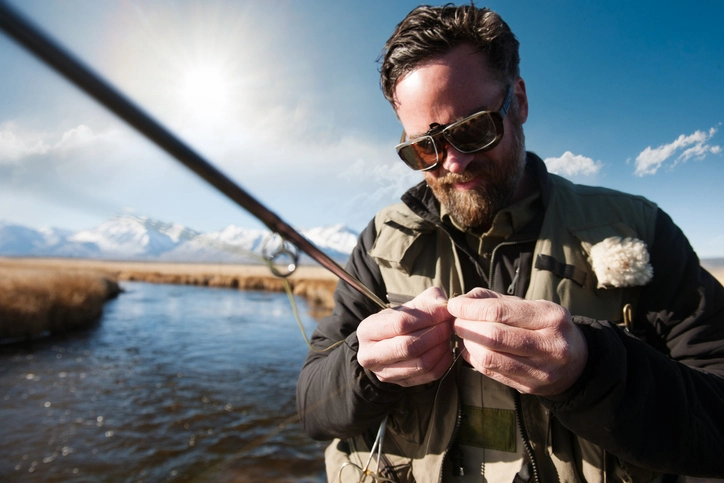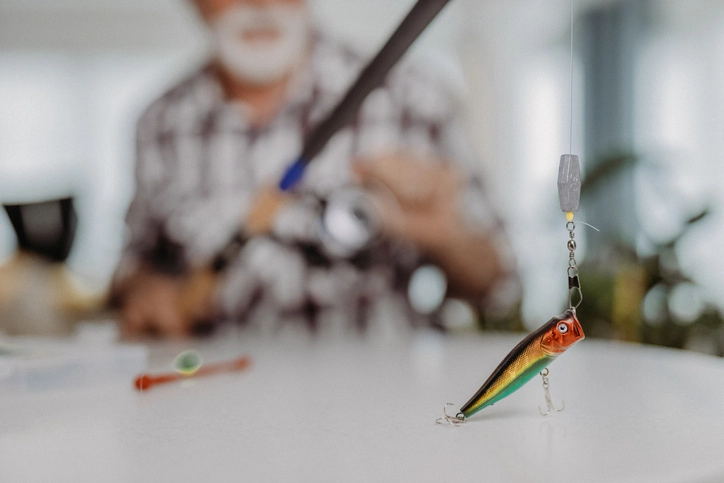Hello, fellow anglers; welcome to my article on how to handle pike fish for catch and release! To ensure pike fish’s well-being during catch-and-release, follow specific care guidelines. Explore vital pike fishing tips and safe handling practices for sustainability.
Safe catch and release practices sustain pike fish populations and conserve fisheries. Enjoy pike fishing by using proper techniques for survival post-catch.
Key Takeaways:
Proper pike fish handling is essential for catch-and-release success.
Use wet hands or a wet cloth to handle pike to cut damage to their sensitive skin.
Remove hooks using appropriate tools and techniques.
Consider using barbless hooks to make unhooking easier and reduce injury to the fish.
Learn how to prevent barotrauma when releasing pike caught from deep water.
Understanding Pike Fish Behavior and Anatomy
Explore northern pike behavior and anatomy, which provide valuable insights for anglers. Knowing crucial aspects ensures success in handling large freshwater pike.
Behavior and Habitat Preferences
“Pike, or water wolves, are predatory fish in North American waters.” Well-adapted pikes prefer hiding in vegetation, rocks, and submerged structures to ambush prey.
Big pike are voracious predators, consuming various prey, including trout and bass. Pike hunt, using sharp teeth to capture and secure prey.
Anatomy and Physical Characteristics
Northern pike unique body: elongated, flat snout, large sharp-toothed mouth. Positioned far back, the pike’s dorsal fins provide stability and maneuverability underwater.
These big fish can grow over 40 inches and weigh 30+ pounds. The muskie, akin to the pike, shares physique and behavior patterns.
Implications for Anglers
Anglers must grasp pike behavior and anatomy for successful targeting. Understanding pike habitats and feeding boosts catch rates with suitable lures.
Knowing pike fish’s anatomy is vital for safe catch and release handling. Anglers can protect pike by learning their structure and ensuring their well-being post-release.
Access Section 3 for a step-by-step pike handling guide during catch and release.
Step-by-Step Guide to Safe Pike Handling
For safe pike catch and release, handle with care to protect fish. Learn pike handling steps to reduce stress and boost survival rates.
1. Hook Removal
Be gentle when removing the hook from the pike’s mouth to prevent injuries. Use pliers or a hook removal tool to extract the hook. Avoid mouth damage. Consider cutting a hooked pike line near the hook to cut harm.
2. Use of Landing Nets
handle the pike with a landing net to prevent injury by thrashing. Choose fine mesh nets to avoid damaging fish gills while landing. Scoop pike into the net, supporting the body to cut stress. Avoid lifting pike too high; strain on organs from air exposure.
3. Cut Stress on the Fish
When handling pike fish, avoid lifting them by the gill plate. Cut stress; keep fish in the water to reduce handling effects. Wet hands before handling pike to protect slime layer, and prevent infections. Handle fish, avoid squeezing; don’t exert too much pressure. Measure or photo, then return the fish to water.
4. Use of Barbless Hooks
Consider using barbless hooks when fishing for pike. Barbless hooks cause less harm and are easier to remove from fish. Reducing deep hooking risk allows quick and safe hook removal.
5. Preserve Shallow Water Pike
Handle shallow water pike with care to ensure safe catch release. Pike in shallow water risks more harm near rocks and plants. Avoid dragging fish; release them into the water to regain strength post-catch.
Anglers preserve pike populations with safe handling guidelines, securing future fishing enjoyment.
Preventing Barotrauma: Techniques for Releasing Pike
Significant concern: barotrauma in pike after catching from deep water. Ensure pike survival with proper techniques and tools, preventing barotrauma.
Venting and Descending Devices
Venting devices relieve pike barotrauma. A venting needle is used on the pike, releasing excess air for buoyancy. Descending devices guide the pike to deeper water, reducing barotrauma effects.
Proper Release Techniques
For effective catch-and-release, cut handling and reduce stress on released pike. Keep hands wet and support fish to protect skin and scales.
Release pike fish in water with the head facing current for safe release. Allow fish to revive before swimming away, ensuring strength and stability.
Tool techniques for pike survival after catch to conserve fish populations.
Fishing Conservation: Preserving Pike Populations
Saving pike is super important for keeping these cool fish around long. Taking care of them when we fish and letting them return to the water helps their numbers stay steady.
When we catch a pike fish, it’s awesome to let it go after. This helps them stay healthy and make more pike babies. Plus, it helps the whole Pike gang grow and stay strong.
Big pikes are like superheroes in the water. Letting them go after we catch them helps keep everything in balance and lets other fish thrive, too.
Want to learn more about saving pike and why it’s important? Check out our article for some tips on how you can help keep these fish happy and swimming strong.
Conclusion
So, handling pike when you catch them and then letting them go is important. Anglers who are careful with their handling help keep pike and the water healthy.
Knowing how pike acts and what they’re made of can help you handle them better when you catch them. Think about where they live and what they eat to help them stay alive after you’ve caught them.
Here’s a guide on handling pike: Take the hook out, use a net, and try to calm the pike. Wet your hands and use hooks without barbs to make it easier to let them go.
It’s important to prevent injuries to pike and help keep fishing sustainable. Tools like venting and descending tools can help pike caught deep underwater. Ensuring a thriving future population of pike requires practicing sustainable catch-and-release methods.
FAQ
How do I handle pike for catch and release?
When handling pike, wet hands to preserve slime for catch-and-release. Use a landing net to lift the fish, support it with hands, remove the hooks with pliers, and then release.
What are some pike fishing tips?
Use big lures or bait when fishing for pike to attract large fish. Search shallow areas near vegetation or structures for pike. Vary retrieval for strikes. Practice safe catch-and-release to preserve pike populations.
What are the proper pike-handling techniques?
Use barbless hooks, support fish with both hands and release them for survival.
How can I prevent barotrauma when releasing pike?
Avoid rapid ascent from deep water to prevent barotrauma in pike. Use venting tools to release air from the fish’s swim bladder. Help pike swim better and survive with proper handling techniques.
What fishing conservation methods can I use to preserve pike populations?
Preserve pike by practicing catch-and-release, which is crucial for trophy fish. Follow size limits and local rules, and join tagging programs for conservation research. Learn and teach pike conservation to safeguard their future for all.
Related Articles:
1. barbless hooks aid in safe fish release
2. The importance of handling pike
3. barotrauma


